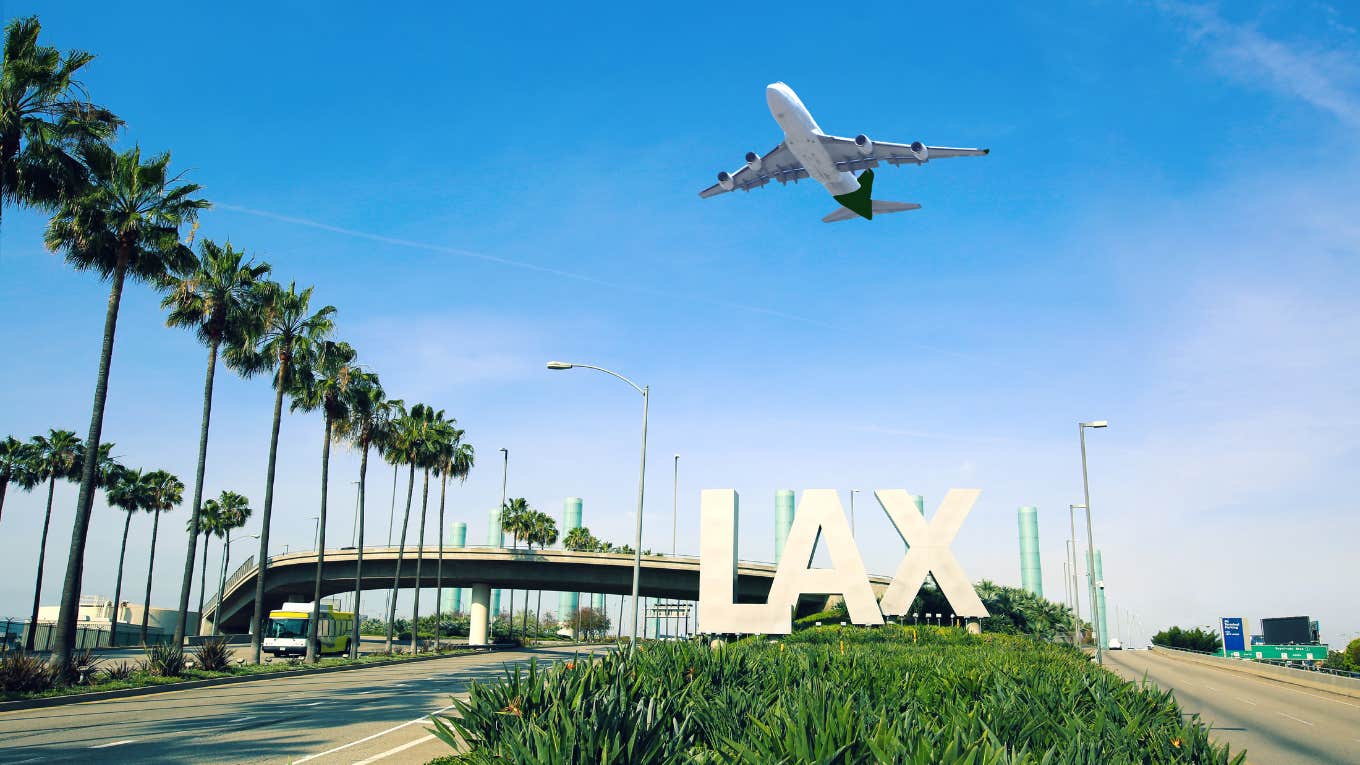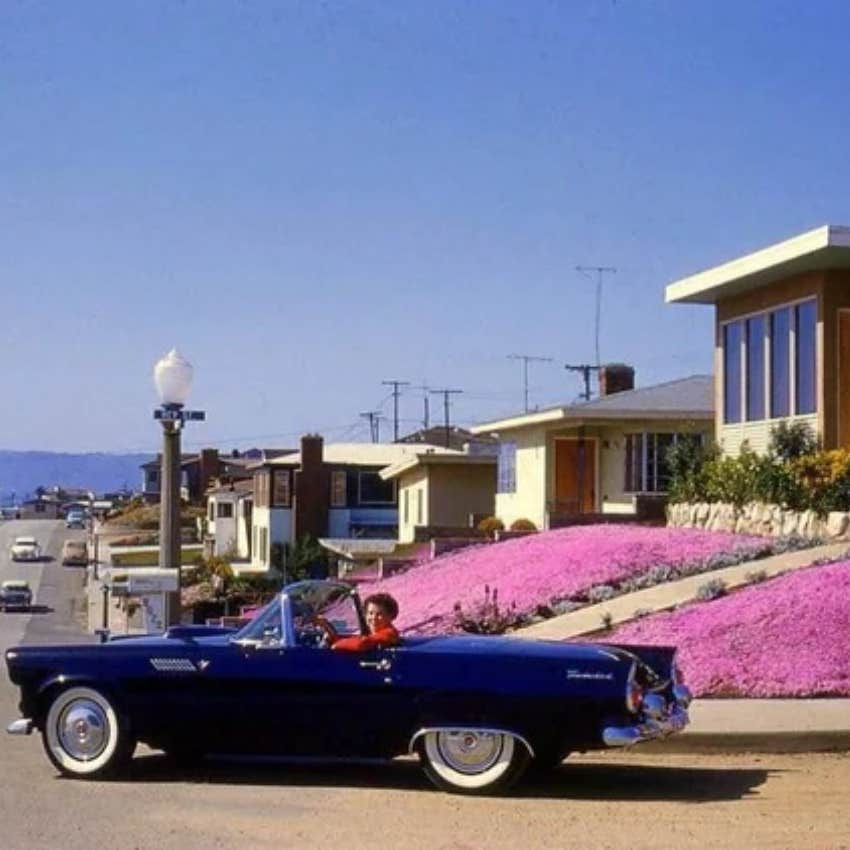Inside The Bizarre Beachfront Ghost Town Right At The End Of LAX's Runways
Once upon a time, movie stars lived there. Now it's just a bunch of empty streets by the airport.
 TriggerPhoto | Getty Images Signature | Canva Pro
TriggerPhoto | Getty Images Signature | Canva Pro When we think of ghost towns, we tend to think of tumbleweeds blowing through the streets of a dilapidated Wild West mining town, or maybe an abandoned medieval burgh that's been crumbling for thousands of years.
However, in Los Angeles, "ghost town" has come to refer to a peculiar collection of winding streets and cul-de-sacs nestled between the Pacific Ocean and one of the world's busiest airports, LAX, which used to be a playground for the rich and famous.
Surfridge is a bizarre beachfront ghost town at the end of LAX's runways.
If you've ever flown out of Los Angeles International Airport, you've probably flown right over Surfridge. Because of the prevailing winds off the ocean, all flights out of LAX take off in the same direction, out over the Pacific. And down below, between the airport runways and the ocean, is a weird sort of spaghetti bowl of winding streets that seem to lead to nowhere.
Those streets are what's left of a neighborhood called Surfridge, once part of present-day Playa del Rey. And despite what it looks like now, it was once one of LA's most desirable neighborhoods, not just for the well-to-do, but also for the famous.
Surfridge was an idyllic oceanside retreat until the noise of planes began to ruin it.
In 1920, Surfridge was billed as "the last of the beaches" that was still unspoiled and ready for development for those chasing the American dream. All you had to do to snag your piece of oceanside paradise was visit one of the sales guys in a tent on the sand and plunk down a $50 down payment.
Shell out another $720 (about $11,500 today) in $20 monthly installments for the next three years, and a piece of Surfridge was yours. Not even the Great Depression stopped the development, and by the 1930s, it was full of everything from humble middle-class cottages to upper-middle-class homes, as well as a handful of estates belonging to celebrities like filmmaking icon Cecil B. DeMille and Bugs Bunny creator Mel Blanc, among others.
 u/j3434 | Reddit | Canva Pro
u/j3434 | Reddit | Canva Pro
The only downside was the nearby Mines Field in the bean farm, a little ways inland. The few tiny planes each day weren't exactly ideal, but how much noise can a few little planes make? That was until the late 20s, when Charles Lindbergh's transatlantic flight started a worldwide air travel boom that turned little Mines Field into a hub of activity, and Los Angeles's first designated municipal airport.
By the late 1960s, nearly everyone was forced out of Surfridge, and it was bulldozed for LAX.
Lindbergh's progress was perhaps the first nail in the coffin. World War II, the efforts for which relied heavily on LA's huge aerospace industry, was the next. But the post-war boom was what ultimately sealed Surfridge's fate. By 1946, Mines Field had passenger terminals, huge runways, and planes screaming overhead all day.
By the 1960s, the jet age had taken over and had basically ruined Surfridge's way of life. According to LA historian Duke Dukesherer, "after the jets came, you had to literally stop talking when they took off." Naturally, residents complained, but were told that the "very sympathetic" city of Los Angeles was going to operate in the airport's best interests, not Surfridge's.
That came to a head in 1967, when officials began dismantling the town with an eminent domain order to vacate 26 streets immediately. Lawsuits ensued, and a few hundred stragglers remained until the mid-70s. But by 1975, they'd been bulldozed too, and Surfridge looked like it does now: Barren streets marked by the odd telephone pole or fence post here and there, everything else lost to progress.
Today, Surfridge is an enclosed sanctuary for endangered butterflies with an eerie 'Area 51 feeling.'
For decades after everything was bulldozed, Surfridge still existed, even if it was empty. The streetlights still came on, and people could stroll the streets to watch the jets take off or access the nearby beaches. Post-9/11 security concerns, however, changed all that.
Now, it's completely closed to the public. The closest you can get is to peer through the chain-link fences around the property or look at satellite photos to view the crumbling foundations, cracked roadways, and abandoned mailboxes sprinkled around the location. Dukesherer says the whole thing has an "eerie Area 51 feeling," a place you can still tell was a thriving community but is now forbidden and mysterious.
But there is a happy ending of sorts. The celebrity homes and workaday beach cottages may be gone, but the rare burrowing owls and endangered El Segundo blue butterflies are back. The native plant species they love are back too, with the help of city-led planting efforts. Now, Surfridge is a protected wildlife sanctuary, albeit one where jumbo jets scream overhead a gazillion times a day. Just another oddity in the life story of this strange pocket of the coast.
John Sundholm is a writer, editor, and video personality with 20 years of experience in media and entertainment. He covers culture, mental health, and human interest topics.

